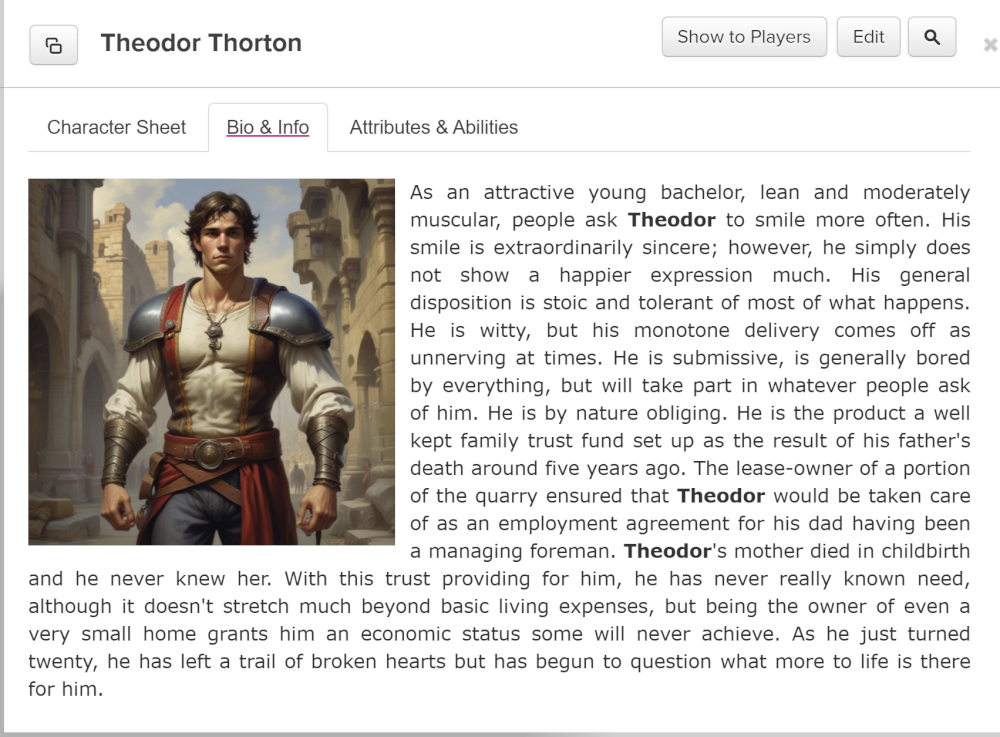Rules
Enchanted Realms Rulebook
Basic Game Rules
The Summary
The last thing to do to round out the starting character sheet is to summarize the back story. This doesn't need to be 2,000-word essay like the introduction of Beowulf, but it should include the pertinent and needed information about who this character is a how he or she got to this point in life.
If this is a struggle for someone as a player, just know there are numerous tools on the Internet and a simple assistant in the Tools Section of Enchanted Realms.
